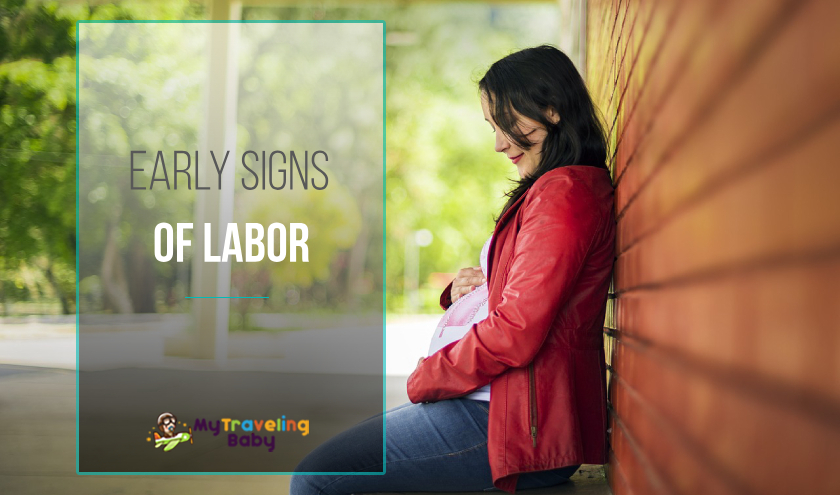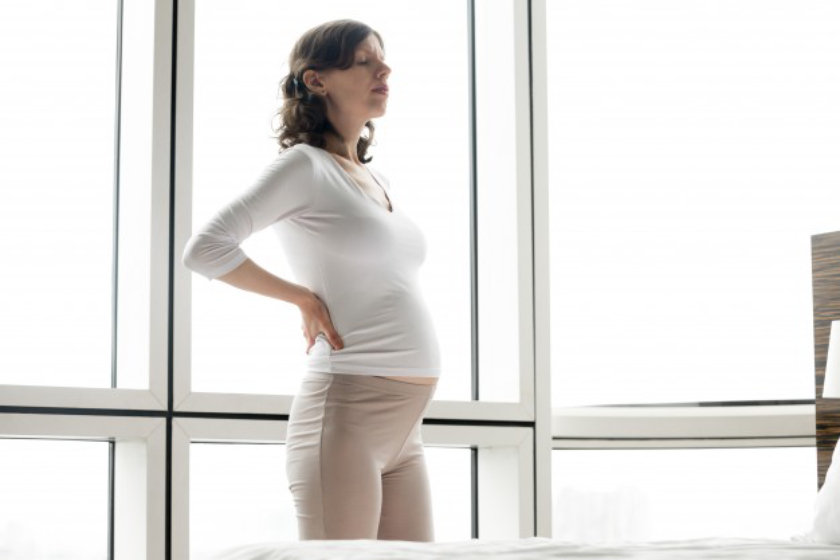
As the due date is slowly closing in, every discomfort and cramp can make a pregnant woman wonder: Am I in labor? Is it finally happening?
However, the reality is quite different. Getting the child out of your body is actually a much longer process, with the body preparing for the real deal weeks before it actually happens. Even though each woman is different, there are still some common telltale signs of labor approaching – let’s take a closer look at them:
Baby Drops
One of the most common signs of early labor is the so-called “baby drops.” Also known as “lightening,” it’s an event during which the child’s head slowly descends deeper into mom’s pelvis.
Even though some mothers do not notice this event at all, it’s something that occurs around two weeks before labor for most women.
An Increased Urge to Urinate
One of the possible results of the “baby drops” is an increased urge to urinate. This is due to the low position of the child’s head – it puts excessive pressure on the mom’s urinary bladder. This causes many moms approaching childbirth to have a frequent need to relieve themselves.
Another thing worth mentioning here is that the baby drops can cause breathing to become much easier. This takes place due to the disappearance of the pressure on mom’s diaphragm coming from underneath.
Passage of the Mucus Plug
One of the most well-known signs of labor approaching is the passage of the mucus plug. Produced by the cervical glands, the mucus plug keeps the woman’s cervical opening closed during the pregnancy period. It’s something that needs to be expelled before the delivery.
The pressure exerted by the baby’s head leads to the mucus getting expressed from the vagina, usually in the form of a “bloody show” (blood-tinged vaginal discharge). For most women, the mucus discharge takes place in days before childbirth, while some won’t see it happening before the actual labor begins.
Dilation of the Cervix
The dilation of the cervix is yet another symptom, although this one can only be detected by a professional during the examination. It’s an event that takes place in the days (or even weeks) before the actual labor. A “fully dilated” cervix means that it has dilated to the overall width of around 10 centimeters.
Back Pain
Many moms claim that they experienced dull back pain in the lower part of their back before giving birth to their child. Even though this can be a symptom of many other things (like the sheer act of having to carry around extra weight each and every day), it’s something experienced by many future moms.
Lower back pain is not something that you should panic about and think about going to the hospital, but it can be a caution flag for the approaching labor.
Contractions
The contractions, described as stabbing, tightening, and pounding by many women, increase in frequency and strength as the childbirth is closing in.
Irregular contractions, also known as “false labor” and Braxton-Hicks contractions, take place close to the end of the pregnancy. These are milder than the “true” contractions and don’t usually occur at regular intervals. Once the contractions start occurring in 10-minute intervals, they signal the onset of childbirth. Contractions are something that makes most moms-to-be see labor painful, but they are an entirely normal thing.
Joints Feeling Looser
Throughout the pregnancy, the hormone called Relaxin makes the woman’s ligaments loosen up a little. It is also the main culprit behind those sudden bouts of clumsiness.
Before going into labor, a woman may notice that the joints all over her body are feeling more relaxed and less tight. It’s nothing to worry about – this is nature’s way to make the baby’s coming into the world easier by opening up your pelvis.
Diarrhea
Just like the uterus muscles relaxing and preparing for labor, the rectal muscles are also “loosening” and causing diarrhea.
Gastrointestinal upset during the pregnancy can be caused by many things – prenatal vitamin, hormonal variances, changes in the diet, etc. However, looser stools than usual can be early labor signs.
Although it can be pretty annoying, diarrhea is entirely normal and one of the most common signs of labor approaching. Don’t forget to call the doctor if you experience severe stomach pain, fever, or if you have diarrhea that lasts more than just a couple of days.
Involuntary Shivering
When it comes to signs labor is near, involuntary shivering is among the most common symptoms. With most moms not knowing what’s actually happening when it takes place, shivering can be frightening. However, there’s nothing to be afraid of, as that’s just the way in which bodies of pregnant women relieve tension. Typically, these bouts of shivering never last longer than just a couple of minutes.
A future mom can help herself by doing something relaxing, such as having a massage, warm shower, or doing some deep breathing. Other strategies include holding the breath for a while or counting backward in threes from 20.
Water Breaking
The “water breaking” (rupture of the amniotic membranes) is one of the most evident signs that the childbirth is finally around the corner. Unlike in the movies, the water breaking is not a sudden and dramatic gush of fluid – it’s more like a trickle or slow dripping.
Amniotic fluid should be odorless and colorless. Sometimes, it can be quite challenging to distinguish it from urine. In case you are leaking this fluid, it is of paramount importance to immediately call the doctor.
Conclusion
Even though the first labors can be scary, there are a lot of signs that can help a new mom get prepared. Noticing the symptoms mentioned above before labor will make it easier for you to get ready for bringing the baby into the world. Remember to listen to your body and make sure to immediately contact your health-care professional (or have someone do it for you) if you think that the labor is finally beginning.




